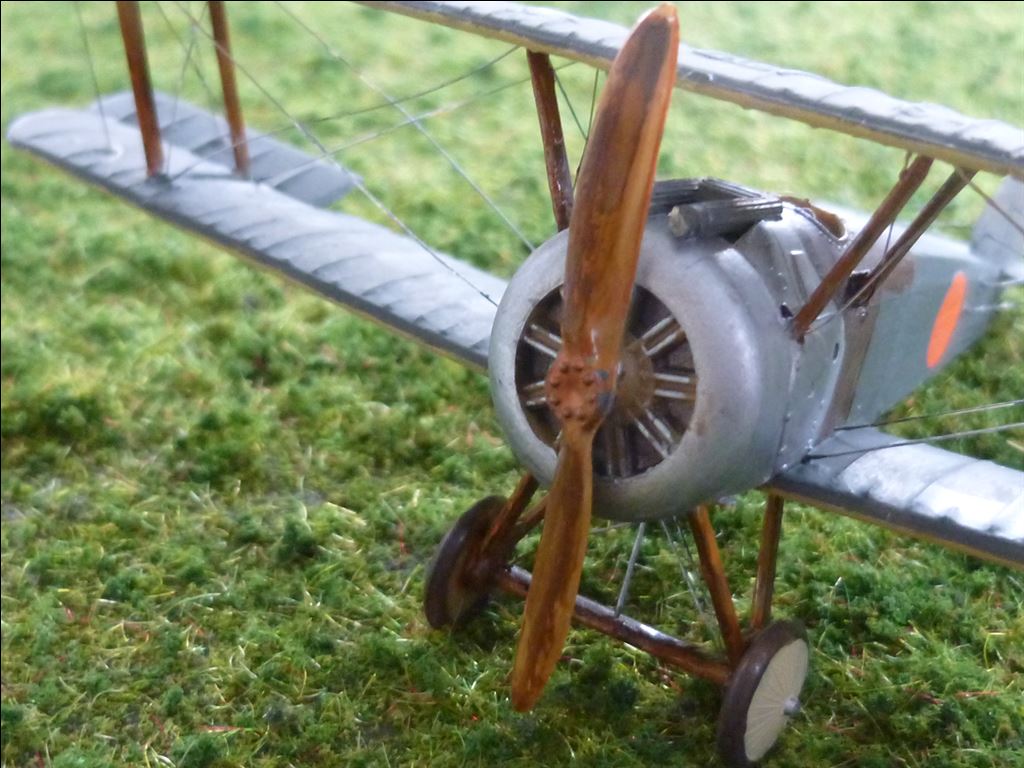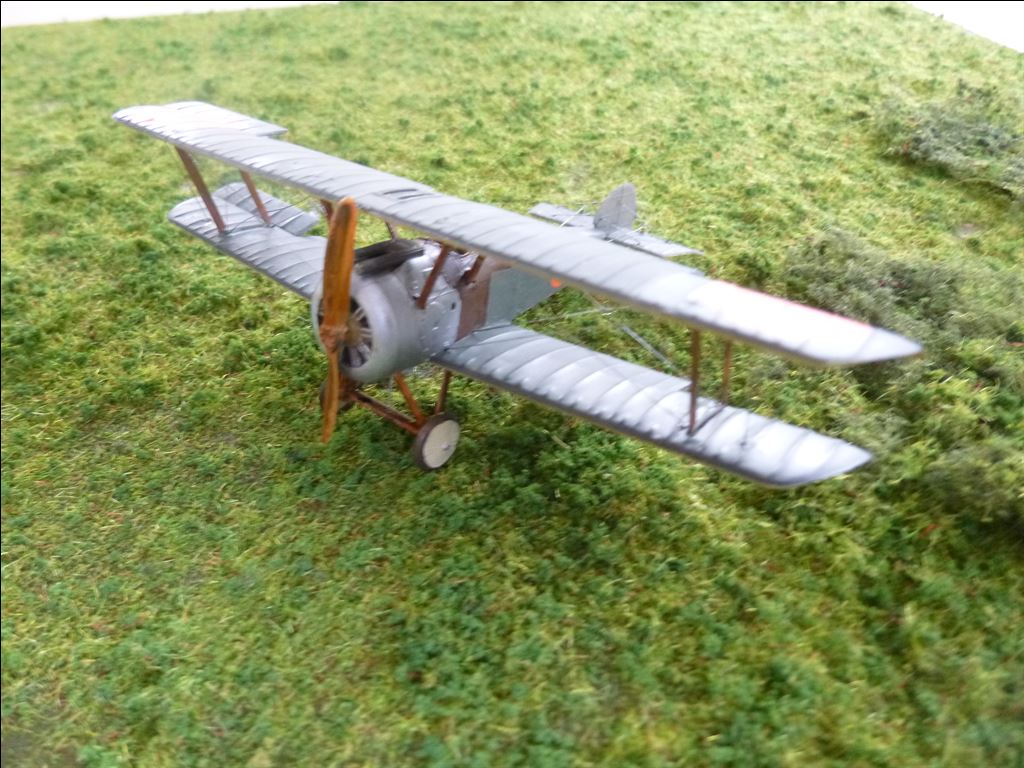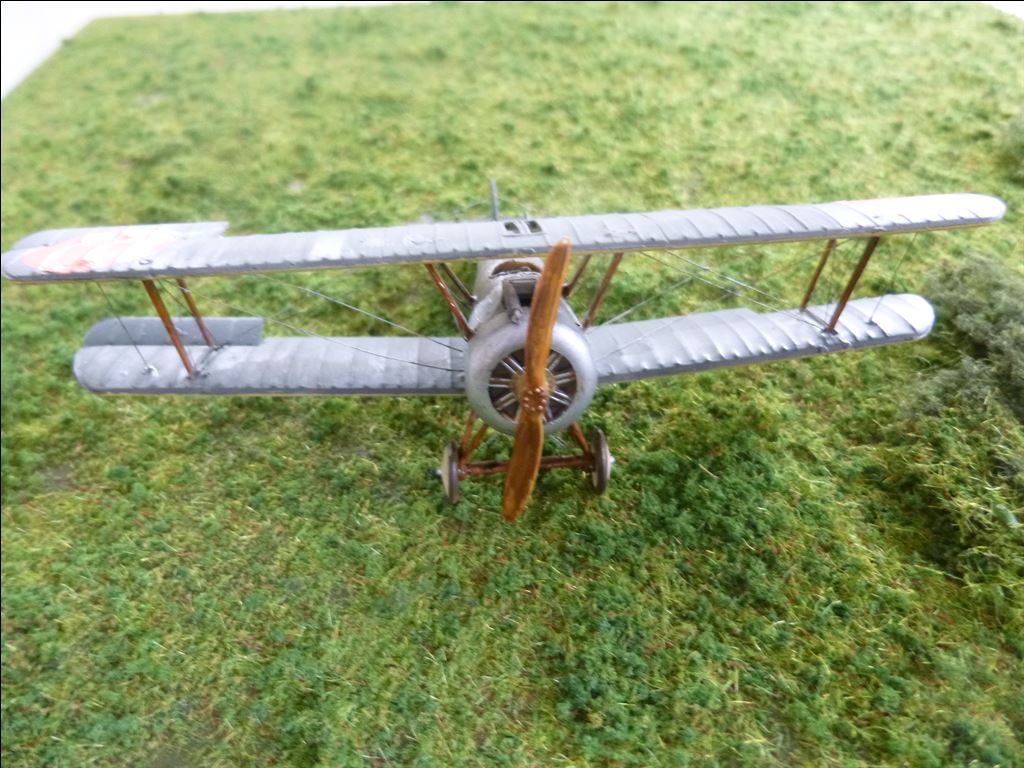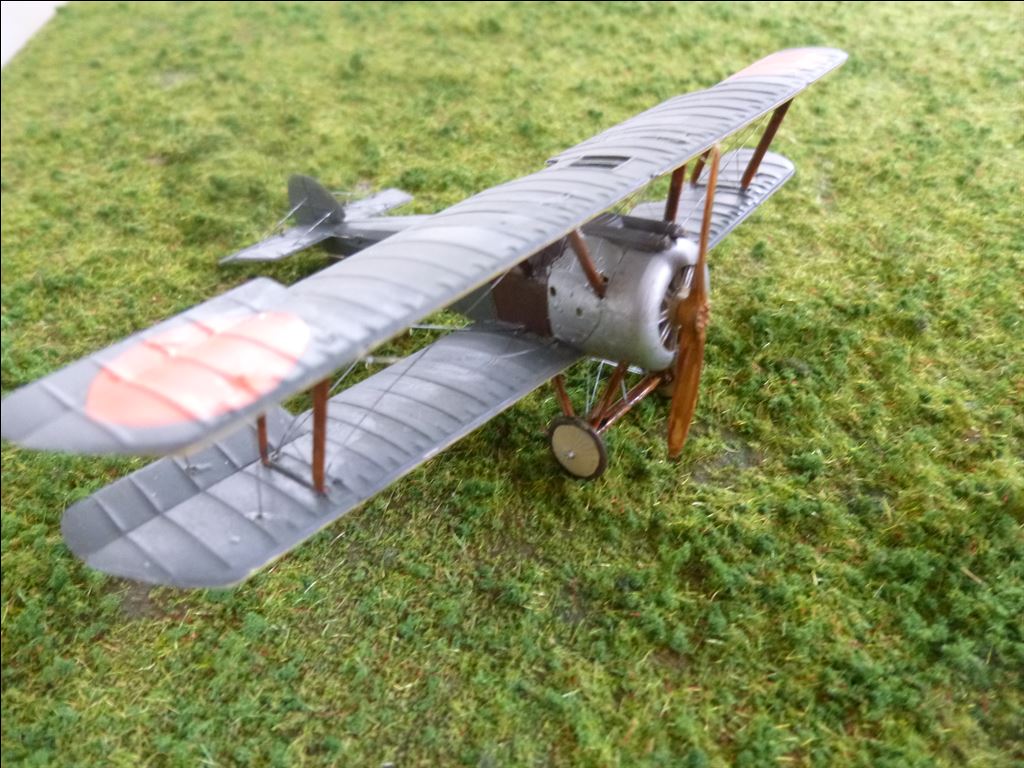History
The Camel was developed to succeed the Sopwith Pup and made its maiden flight in December 1916.
The prototype was equipped with a 110 hp LeClerget 9Z rotary engine. The Camel had two fixed synchronized .303 inch Vickers machine-guns.
Its nick name "Camel" referred to the double curved panel over both machine-0guns.
The Camel was uneasy to fly with. Inexperienced pilots had great difficulties with the aircraft especially with the engine which was very difficult to handle. It's manoeuvrability was caused to the fact that engine, pilot, armament and fuel tank were concentrated in the front section of the aircraft.
In the end about 5490 examples were built with a large variety of engines:
- 130 hp Clerget 9B (standard engine)
- 140 hp Clerget 9Bf
- 110 hp Le Rhône 9J
- 150 hp Bentley BR1
- 100 hp Gnome Monosoupape 9B-2
- 150 hp Gnome Monosoupape 9N
Versions.
- Sopwith Camel F.1: single seat fighter; main production version;
- Sopwith Camel 2F.1: carrier aircraft; smaller wingspan; Lewis machine gun on upper wing and a 150 hp Bentley BR1;
- Sopwith Camel "Comic" Night fighter: Pilot was moved backwards; guns were replaced with two Lewis machines guns on the upper wing.
- F.1/1 version with tapered wings;
- (Trench Fighter) T.F.1: experimental armoured aircraft with downward pointing machine guns for improved strafing..
| Dimensions: | |||
| Length: | 7,01 m | Wingspan: | 7,82 m |
| Height: | 3,05 m | Wing area: | 22,29 m2 |
| Weights: | |||
| Empty weight: | 556 kg | Max. start weight: | 777 kg |
| Performances: | |||
| Max. speed: | 160 km/hr | Rate of climb: | 330 m/min |
| Range: | 485 km | Service ceiling: | 6400 m |
| Miscellaneous: | |||
| Engine type: | One Le Rhône 9B rated 130 hp | ||
| Crew: | Two men: one aviator plus one observer/air gunner | ||
| Armament: | Two synchronized fixed forward firing Vickers .303 inch machine-guns. | ||
| The Camel F.1 was a single seat fighter version of the two seat Camel. | |||
On October 7, 1918 a Sopwith Camel, with registration E1537, from RFC no. 65 Squadron, with airman luitenant B. Lockey, landed near Groede.
It was interned with registration S226, though it was under repair, but never completely finished.
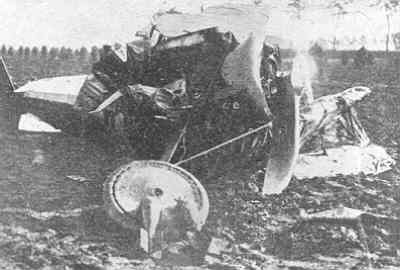
[Enclosed photo from BeeldBank NIMH. Click on photo for ordering information]
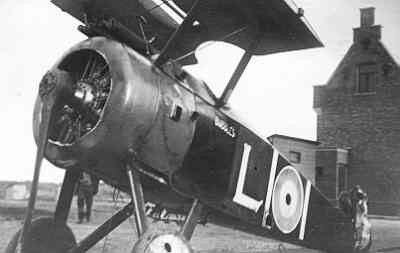
[Enclosed photo from BeeldBank NIMH. Click on photo for ordering information]
| Serial | RFC Serial | Date in service | Date out of service | Notes |
|---|---|---|---|---|
| S226 | F1537 | 17-10-1918 |
1/72nd Scale
Kits
- Academy
- Kit 1624: Sopwith Camel
- Esci
- Kit 409020: Sopwith Camel
- Encore
- Kit 72002: A re-release of the Roden kit with different decals
- Roden
- Kit 040: Sopwith F1 Camel
- Kit 044: Sopwith 2F1 Camel 'Ships Camel'
- Kit 051: Sopwith F1 Camel Comic Fighter
- Kit 052: Sopwith TF1 Camel "Trench Fighter"
- Kit 054: Sopwith F1 Camel "Two seat Trainer"
- Revell
- Kit 0411: Sopwith Camel F1
Modelling add-on
- Airwaves
- Set C7274: Detailset Sopwith Camel (Revell)
- Part Etchings
- Set S72-242: Detailset Sopwith Camel (Roden)
- Set S72-243: Detailset Sopwith F1 Camel two seat trainer (Roden)
Decals
- --
- Set --: --
Schaal 1/48
Bouwpakketten
- Blue Max
- Kit 109: Sopwith F1//2F1 Camel
- Eduard
- Kit 8450: Sopwith F1 Camel
- Kit 8060: Sopwith F1 Camel Dual Combo (RFC))
- Kit 8056: Sopwith F1 Camel (profipack)
- Kit 8055: Sopwith F1 Camel (RNAS)
- Kit 8057: Sopwith F1 Camel (RFC)
- Smer
- Kit 0809: Sopwith Camel
Modelling add-on
- Eduard
- Set FE432: Detail set Sopwith Camel Interior Self adhesive (Eduard)
- HGW Webgarten
- Set 148522: Sopwith Camel laser cut Seatbelts and Buckles (Eduard)
- Part Etchings
- Set S48147: Detail set Sopwith Camel (Eduard)
Decals
- --
- Set --: --
| Scheme | Colour name | FS-number | BS-number | Humbrol | XtraColor | Vallejo Model Color | Vallejo Model Air | |
|---|---|---|---|---|---|---|---|---|
| Standard #1 | Fuselage | PC10 | ~4086 | 108 | X144 | 70.830? | ||
| Linen parts | Doped | ~3531 | 121 | X105 | 70.819 | 71.028 | ||
| Wooden and metal parts | Varnish | |||||||
Check www.paint4models.com for an extensive conversion table with lots of colour and paint systems.
Literature.
| Van Brik tot Starfighter 1 | H. Hooftman | Pag. | 1965 | |
| KLu Vliegtuigen: De vliegtuigen van de Koninklijke Luchtmacht vanaf 1913 | Wim Schoenmaker & Thijs Postma | Pag. 23 | 1987 | Uitgeverij De Alk, Alkmaar |
| Vintage Warbird no 1: The Royal Flying Corps in worldwar One | Raymond Laurence Rimell | pag. 56 - 60 | 1987 | Uitgever Arms and Armour Press, Poole, Dorset |
| Aircraft Archive: Aircraft of World War One; Volume 2. | Pag. 32 - 34 | 1989 | Uitgever Argus Books, Hempsted | |
| Vintage Aviation fotofax: Sopwith camel | J.M. Bruce | 1989 | Uitgever Arms and Armour Press, Poole, Dorset | |
| Camouflage en Kentekens | J.Greuter e.a. | 1997 | Bonneville – Bergen (NH) | |
| Air Enthusiast no.80,The Historical Aviation Journal: Unexpected Windfalls | Bart van der Klaauw | Pag. 54 - 59 | 1999 | Uitgever Key Publishing, Stamford |
Websites.
- Australian Plastic Modellers Association
- Wikipedia UK: Sopwith Camel
- Centennial of Flight; Sopwith Camel
- The Aerodrome: Sopwith Camel
- AcePilots.com: Sopwith Camel
- RAF Msueum.org: Sopwith Camel F1
- Aviaion History.: Sopwith Camel
- World War 1.com: Sopwith Camel
--
